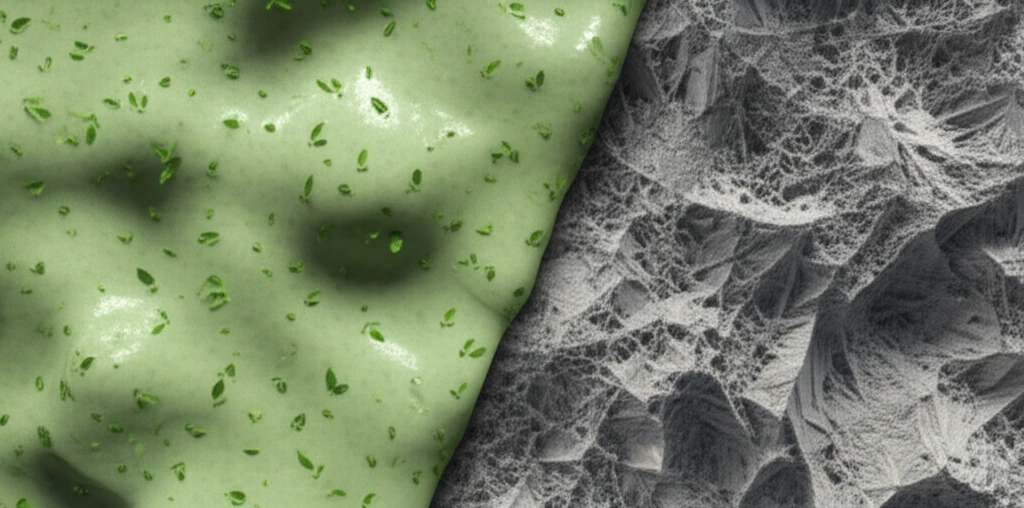
Geopolymer Concrete vs. Portland Concrete: Which is Better for Sustainable Construction?
"A comparative analysis of geopolymer and Portland cement concretes reveals surprising insights into their mechanical, thermal, and microstructural properties, paving the way for eco-friendly building solutions."
The construction industry is under increasing pressure to adopt sustainable practices. Traditional Portland cement (PC) concrete, while widely used, is a significant contributor to global carbon emissions. The production of Portland cement is energy-intensive, releasing substantial amounts of CO2 into the atmosphere. This has spurred a search for alternative materials that can reduce the environmental impact of construction.
Geopolymer concrete (GC) has emerged as a promising alternative. Geopolymers are inorganic polymers synthesized from materials rich in silica and alumina, such as industrial byproducts like fly ash and slag. These materials can be activated with alkaline solutions to form a cementitious binder, offering a way to recycle waste materials and reduce the demand for Portland cement. Geopolymer concrete is known for its rapid strength development and good dimensional stability, making it an attractive option for various construction applications.
However, the environmental benefits and technical properties of geopolymer concrete are still subjects of ongoing research. While some studies suggest that geopolymer concrete has a lower carbon footprint than Portland cement concrete, others indicate that the difference may not be as significant as initially thought. A comprehensive understanding of the mechanical, thermal, and microstructural properties of geopolymer concrete is crucial for its wider adoption in the construction industry. In the context of concrete, understanding the effects of calcium hydroxide leaching is also very important to maintaining structural intergrity and durablity of the materials.
Geopolymer Concrete vs. Portland Cement Concrete: Key Differences and Performance

A recent study published in the Journal of Materials Research and Technology provides a detailed comparison of geopolymer concrete and high-performance Portland cement (HPC) concrete. The researchers examined the mechanical strength, thermal behavior, and microstructure of both materials to assess their suitability for various construction applications. The concretes were made with the same aggregate particle trace (cement/sand/gravel) and water/cement ratio to ensure a fair comparison.
- High Early Strength: Geopolymer concrete exhibits high early strength, making it suitable for applications where rapid setting and hardening are required.
- Extraordinary Durability: Geopolymer concrete demonstrates excellent durability, resisting degradation from environmental factors and chemical attacks.
- Resistance to Chemical Attack: Geopolymers are highly resistant to chemical attack, making them ideal for use in harsh environments where exposure to acids, sulfates, and other corrosive substances is likely.
- Ability to Immobilize Toxic Atoms: Geopolymers can effectively immobilize toxic atoms and hazardous waste materials, making them suitable for environmental remediation and waste management applications.
The Future of Sustainable Construction with Geopolymer Concrete
The research suggests that geopolymer concrete is a viable alternative to Portland cement concrete, particularly in applications where early strength development and thermal stability are important. Its use of recycled materials and potentially lower carbon footprint make it an attractive option for sustainable construction. However, more research is needed to fully understand its long-term performance and optimize its production for wider adoption. As the construction industry continues to seek ways to reduce its environmental impact, geopolymer concrete is poised to play an increasingly important role in building a greener future.
